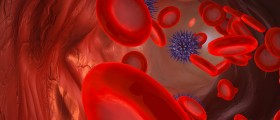
Introduction to Rheumatic Fever
Rheumatic fever is an inflammatory disease that may develop as a complication of untreated strep throat. Sometimes it is caused by a poorly treated strep throat. Strep throat is a disease caused by infection with group A streptococcus bacteria. Although it might occur with younger children and adults, it is most common with younger adults. The typical age group affected by this disease is from 5 till 15 years of age. It is very uncommon in developed countries.
There are certain factors that might increase a person’s risk of getting this disease. First of all, a person’s genetic traits may be a contributing factor. There are certain genes passed through someone’s family that may make them more susceptible to getting rheumatic fever. Also, environmental factors should not be neglected when considering the causes of rheumatic fever. A larger risk of rheumatic fever is linked to overcrowded places, poor sanitation and other conditions that may easily result in the speedy transmission of this disease. In these cases, there is also a risk of more people being exposed to strep bacteria.
The only way of preventing rheumatic fever is to avoid overcrowded places. For people that already have strep throat it is important that they consult a doctor as soon as they notice the first symptoms, so that the doctor might prescribe the adequate course of treatment. In that way, the disease will be dealt with promptly, and the risk of getting rheumatic fever decreasessignificantly.
Causes
This condition can happen after an infection of the throat with a bacterium called Streptococcus pyogenes, or group A streptococcus (more often if it has been left untreated or has been poorly treated). Theexact link between strep infection and rheumatic fever is not until this day clear, but it appears that the bacterium deceives the body’s immune system. The strep bacterium contains a protein similar to one found in certain tissues of the body. This is why the immune system cells that would normally target the bacterium may treat the body's own tissues as if they were causing the infection (this happens particularly to the tissues of the heart, joints, skin and central nervous system). This immune system reaction results in inflammation.
Symptoms
The symptoms of rheumatic fever may vary from person to person. Some might have several symptoms, while others experience only a few, and only mildly. The symptoms of rheumatic fever are: fever, red, swollen joints, chest pain, painless nodules beneath the skin, fatigue, shortness of breath, painful and tender joints, jerky body movements, skin rash, weight loss, etc.
Treatment
Most commonly, the doctor will prescribe antibiotics, anti-inflammatory drugs, or anticonvulsant medications, all in order for them to destroy any remaining bacteria, relieve symptoms, and, finally, prevent any more episodes of this condition.
















Your thoughts on this
Loading...